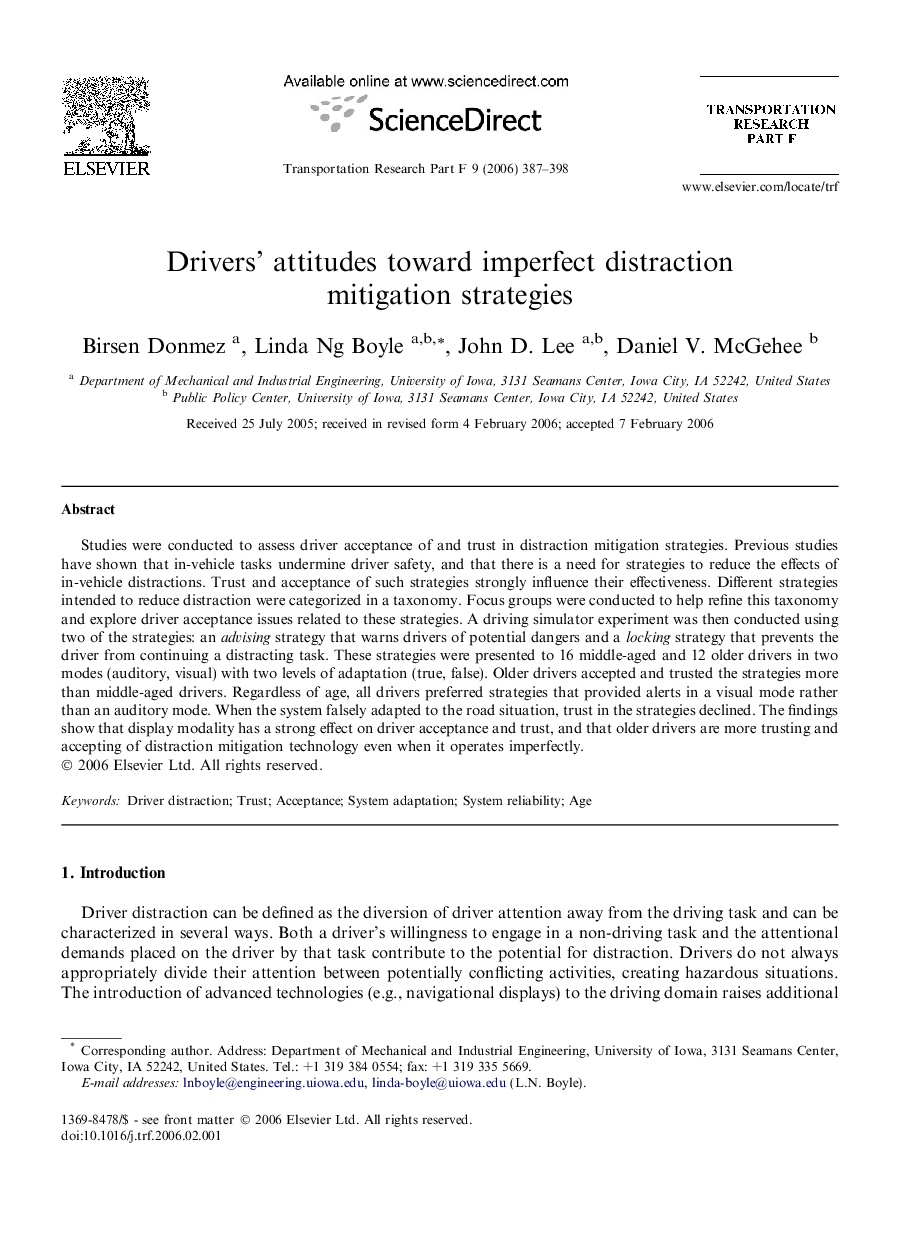| کد مقاله | کد نشریه | سال انتشار | مقاله انگلیسی | نسخه تمام متن |
|---|---|---|---|---|
| 898142 | 915240 | 2006 | 12 صفحه PDF | دانلود رایگان |

Studies were conducted to assess driver acceptance of and trust in distraction mitigation strategies. Previous studies have shown that in-vehicle tasks undermine driver safety, and that there is a need for strategies to reduce the effects of in-vehicle distractions. Trust and acceptance of such strategies strongly influence their effectiveness. Different strategies intended to reduce distraction were categorized in a taxonomy. Focus groups were conducted to help refine this taxonomy and explore driver acceptance issues related to these strategies. A driving simulator experiment was then conducted using two of the strategies: an advising strategy that warns drivers of potential dangers and a locking strategy that prevents the driver from continuing a distracting task. These strategies were presented to 16 middle-aged and 12 older drivers in two modes (auditory, visual) with two levels of adaptation (true, false). Older drivers accepted and trusted the strategies more than middle-aged drivers. Regardless of age, all drivers preferred strategies that provided alerts in a visual mode rather than an auditory mode. When the system falsely adapted to the road situation, trust in the strategies declined. The findings show that display modality has a strong effect on driver acceptance and trust, and that older drivers are more trusting and accepting of distraction mitigation technology even when it operates imperfectly.
Journal: Transportation Research Part F: Traffic Psychology and Behaviour - Volume 9, Issue 6, November 2006, Pages 387–398